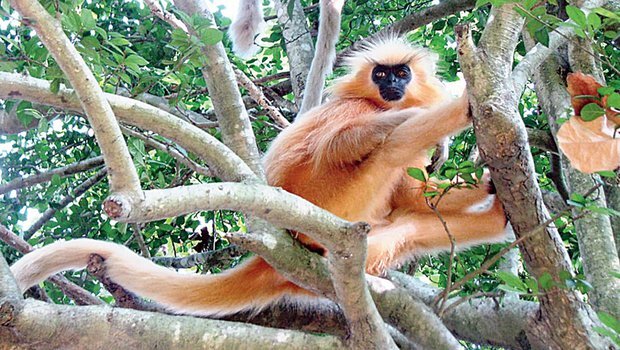Important Facts For Prelims
Gee’s Golden Langur
- 22 Jun 2020
- 2 min read
Why in News
Primatologists have observed that the threat of electrocution and inbreeding is increasing among the Gee’s Golden Langur.
Key Points
- Scientific Name: Trachypithecus geei
- About: Golden langurs can be most easily recognized by the color of their fur, after which they are named.
- It has been noted that their fur changes colors according to the seasons as well as geography (region they live in).
- The color of the young also differs from adults in that they are almost pure white.
- They are highly dependent on trees, living in the upper canopy of forests. They are also known as leaf monkeys.
- Habitat: It is endemic to western Assam, India, and southern Bhutan.
- Their habitat is restricted to the region surrounded by four geographical landmarks: the foothills of Bhutan (North), Manas river (East), Sankosh river (West), and Brahmaputra river (South).
- Threats:
- Restricted Habitat: As mentioned above, their habitat is restricted by natural boundaries further increasing the threat of extinction.
- Habitat Fragmentation: Their habitat in Assam has fragmented drastically especially after a thrust on rural electrification and massive deforestation.
- Inbreeding: Obstructions such as wires, and gaps in the forest due to felling, have increased the threat of inbreeding among golden langurs.
- Conservation Efforts/Status:
- The Central Zoo Authority, New Delhi entrusted the state zoo with the project for the conservation breeding of golden langur in Assam in 2011.
- In 2019, Bhutan recorded a drop of 62% in the population of golden langurs over the 2009 census.
- The recorded estimation in Assam in 2009 was 5,140. This year’s census could not be completed due to the Covid-19 lockdown.
- Protection Status:
- IUCN List of Threatened Species: Endangered
- Convention on International Trade in Endangered Species of Wild Fauna and Flora (CITES) : Appendix I
- Wildlife Protection Act, 1972 : Schedule I







